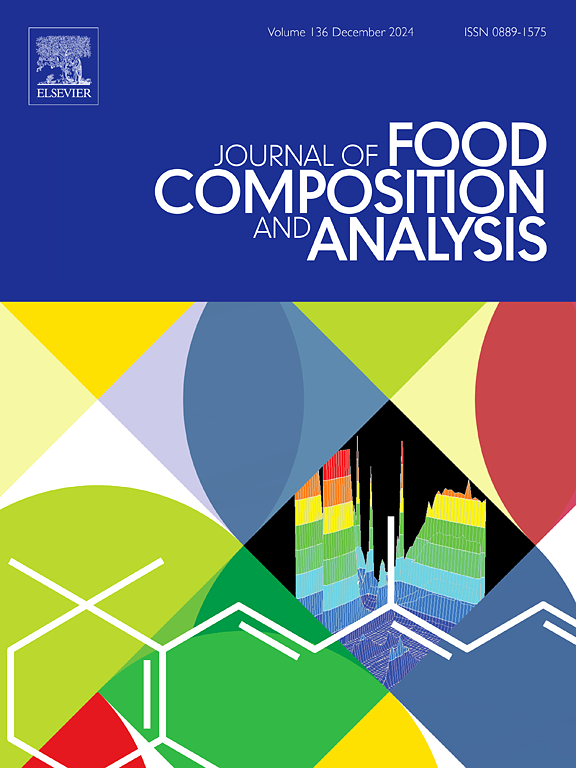Influence of yeasts and aging on the accumulation of flavor components in Rosa roxburghii Tratt wine
IF 4
2区 农林科学
Q2 CHEMISTRY, APPLIED
引用次数: 0
Abstract
Rosa roxburghii Tratt (RRT) is rich in nutrients, but lacks the desirable flavor required for direct consumption as a traditional fruit in China. This work compared the flavor improvement of polyphenols and aromas in Rosa roxburghii Tratt wine by yeasts and aging. After fermentation, the total content of volatiles significantly increased, primarily due to a rise in 3-methyl-1-butanol (at least 32.1 ×103 μg/L, OAV > 10.9), while (E)-3-hexen-1-ol, and (Z)-3-hexen-1-ol significantly decreased (OAV < 2.67, both dropped below 20 %). D254 yeast group effectively reduced the formation of undesirable volatiles while highlighting fruity aroma characteristics. For polyphenols, significant improvements were found in BV818 yeast group (476 ×103 μg/L) and mixed fermentation group (473 ×103 μg/L); fermentation of D254 group presented a lower content of major astringent flavanols. During aging, a considerable loss of aroma was observed in the BV818 group, but the aroma profiles of the D254 and mixed fermentation groups improved significantly, mainly due to the increase in esters. There was a potential correlation between the polyphenol matrix and volatiles. The low flavonols composition appeared to be more conducive for the formation of fatty acid esters during aging. Seven flavonols may serve as important indicators for this process, including quercetin-glucuronide, quercetin-rhamnoside, taxifolin, kaempferol, kaempferol rutinoside, kaempferide, and salicylic acid.
求助全文
约1分钟内获得全文
求助全文
来源期刊

Journal of Food Composition and Analysis
工程技术-食品科技
CiteScore
6.20
自引率
11.60%
发文量
601
审稿时长
53 days
期刊介绍:
The Journal of Food Composition and Analysis publishes manuscripts on scientific aspects of data on the chemical composition of human foods, with particular emphasis on actual data on composition of foods; analytical methods; studies on the manipulation, storage, distribution and use of food composition data; and studies on the statistics, use and distribution of such data and data systems. The Journal''s basis is nutrient composition, with increasing emphasis on bioactive non-nutrient and anti-nutrient components. Papers must provide sufficient description of the food samples, analytical methods, quality control procedures and statistical treatments of the data to permit the end users of the food composition data to evaluate the appropriateness of such data in their projects.
The Journal does not publish papers on: microbiological compounds; sensory quality; aromatics/volatiles in food and wine; essential oils; organoleptic characteristics of food; physical properties; or clinical papers and pharmacology-related papers.
 求助内容:
求助内容: 应助结果提醒方式:
应助结果提醒方式:


